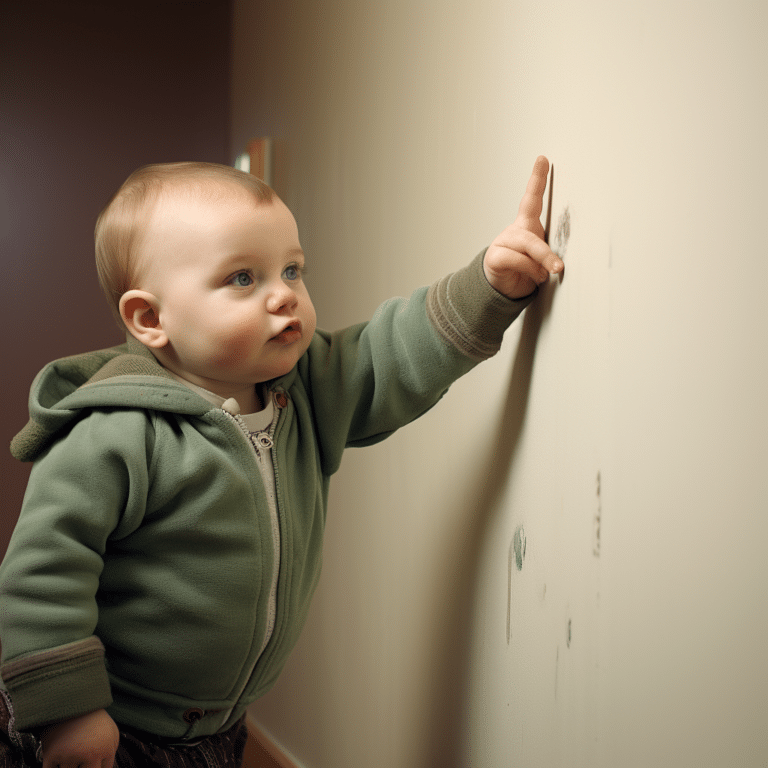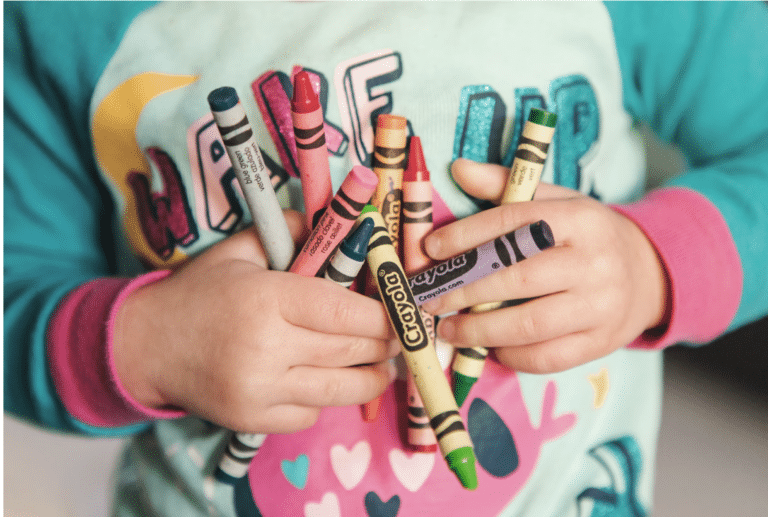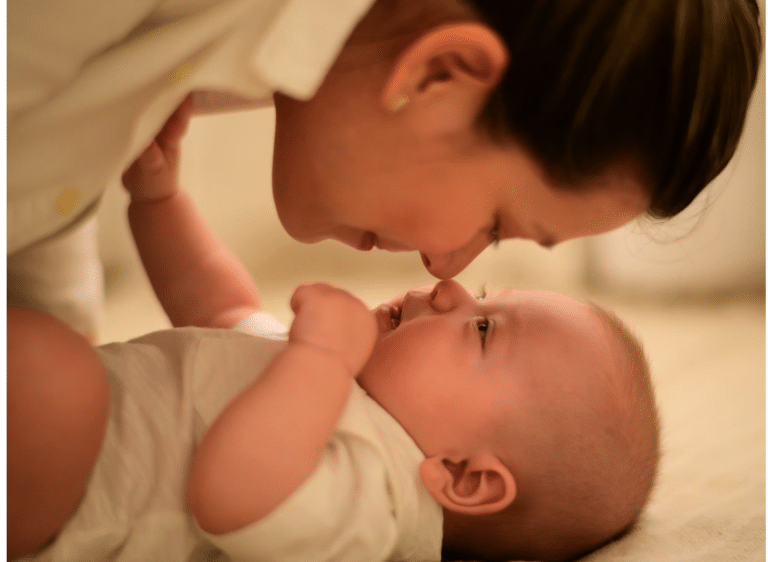Mastering Newborn Sleep: Creating a Perfect Routine
In this comprehensive guide, I will provide you with all the information you need to create the perfect baby routine. From establishing a consistent sleep schedule to developing a structured daily routine, I will help you simplify your parenting journey and ensure that your baby gets the sleep and care they need. With tips and advice from experts, you’ll learn how to create a routine that works best for your baby.
Key Takeaways:
- Developing a consistent baby routine is essential for ensuring your baby gets the sleep and care they need.
- By establishing a sleep schedule and daily routine, you can simplify your parenting journey.
- Tips and advice from experts will help you create a routine that works best for your baby.
- Consistency, flexibility, and understanding your baby’s unique needs are key to crafting the perfect routine.
- A sleep-friendly environment and incorporating relaxing activities can promote better sleep for your baby.

The Importance of a Newborn Sleep Schedule
Creating a consistent sleep schedule for your newborn is essential for their overall well-being. Understanding their sleep patterns and implementing day and nighttime solutions can help ensure that they get the right amount of sleep they need. By establishing a newborn sleep schedule, you can promote healthy sleep habits from the very beginning.
During the early weeks of your baby’s life, their sleep patterns may be irregular and unpredictable. However, by providing them with a structured routine, you can help regulate their sleep and promote better rest. Newborns thrive with routine, and having a consistent sleep schedule can also help you as a parent in managing your own sleep patterns and daily activities.
Day and nighttime solutions are crucial in creating a newborn sleep schedule. Establishing a soothing bedtime routine, such as dimming the lights and engaging in relaxing activities, can signal to your baby that it is time to wind down and prepare for sleep. Similarly, providing a stimulating environment during wakeful periods can help promote alertness and engagement.
The Importance of a Newborn Sleep Schedule
“Creating a consistent sleep schedule for your newborn helps regulate their sleep and promotes better rest.”
By following a newborn sleep schedule, you can ensure that your baby gets the sleep they need for their growth and development. It also helps prevent overtiredness, which can lead to difficulties in falling asleep and staying asleep. A well-rested baby is more likely to be content, alert, and ready to learn during their awake times.
| Benefits of a Newborn Sleep Schedule | Daytime Solutions | Nighttime Solutions |
|---|---|---|
|
|
|
Overall, a newborn sleep schedule provides a framework for your baby’s day, allowing them to have a consistent routine that meets their sleep needs. It may take time to establish and adjust the schedule as your baby grows, but with patience and persistence, you can create a sleep routine that works best for your newborn and supports their healthy development.
Week-by-Week Guide to Newborn Sleep
During the first few weeks of your baby’s life, their sleep patterns and needs will change rapidly. It is important to have a clear understanding of what to expect in terms of sleep, feeding, and awake time for each week of your baby’s infancy. This week-by-week guide will provide you with valuable insights to create a sleep routine that meets your baby’s developmental needs.
To ensure your newborn gets the sleep they need, it is crucial to focus on encouraging full feeds. This means making sure your baby is well-fed during each feeding session, whether you are breastfeeding or using formula. Adequate nutrition plays a significant role in promoting healthy sleep habits.
Additionally, it is essential to incorporate short, frequent naps into your baby’s daily routine. Newborns have short awake windows and need to nap frequently to avoid becoming overtired. Aim for nap times that coincide with your baby’s natural sleep cues, such as yawning or rubbing their eyes. By following their cues and providing an environment conducive to sleep, you can help your newborn establish a healthy sleep routine.
Week 1: Adjusting to Life Outside the Womb
During the first week, your baby is adjusting to life outside the womb, and their sleep patterns may be irregular. It is common for newborns to sleep for short periods throughout the day and night, waking up for feedings every few hours. Focus on establishing a consistent routine of feeding, burping, and soothing your baby back to sleep.
| Week | Sleep | Feeding | Awake Time |
|---|---|---|---|
| Week 1 | Irregular sleep patterns | Feed every 2-3 hours | Short awake periods |
| Week 2 | Inconsistent sleep, longer stretches at night | Feed every 2-3 hours | Gradually increasing awake time |
| Week 3 | More organized sleep patterns, longer nighttime sleep | Feed every 2-3 hours | Increasing alertness during awake time |
Week 2: Longer Stretches of Sleep
As your baby enters the second week, you may notice longer stretches of sleep at night. While they still require frequent feedings, you may start to see more consistency in their sleep patterns. It is important to continue offering full feeds and maintaining a soothing sleep environment to support their sleep development.
By the third week, your baby’s sleep patterns become more organized, with longer periods of sleep at night. This is a good time to start establishing a bedtime routine to signal to your baby that it’s time to wind down and prepare for sleep. Incorporate calming activities, such as a warm bath or gentle massage, to create a relaxing atmosphere for better sleep quality.
By closely following this week-by-week guide and adapting the sleep routine to your baby’s changing needs, you can support their healthy sleep development and ensure they get the rest they need for optimal growth and wellbeing.
Establishing a Bedtime Routine
A consistent bedtime routine is essential for signaling to your baby that it’s time to wind down and prepare for sleep. By incorporating sleep cues and engaging in relaxing activities, you can create a soothing environment that promotes a restful night’s sleep.
Sleep Cues
One of the key elements of a successful bedtime routine is the use of sleep cues. Sleep cues are specific activities or actions that help your baby associate them with bedtime and prepare for sleep. Some common sleep cues include dimming the lights, playing soft music or white noise, and reading a bedtime story. By consistently using these cues before bedtime, your baby will start to recognize them and understand that it’s time to sleep.
Relaxing Activities
Incorporating relaxing activities into your baby’s bedtime routine can further enhance their ability to unwind and fall asleep. Some examples of relaxing activities include a warm bath, gentle massage, or quiet playtime. These activities help calm your baby’s mind and body, creating a peaceful transition from wakefulness to sleep. Choose activities that your baby enjoys and that promote relaxation.
| Sleep Cues | Relaxing Activities |
|---|---|
| Dimming the lights | Warm bath |
| Playing soft music or white noise | Gentle massage |
| Reading a bedtime story | Quiet playtime |
It’s important to note that every baby is unique, and what works for one may not work for another. Experiment with different sleep cues and relaxing activities to find the routine that best suits your baby’s needs and preferences.
By establishing a consistent bedtime routine that incorporates sleep cues and relaxing activities, you can create an environment that promotes healthy sleep habits and helps your baby transition to a restful night’s sleep.
The Role of Environment in Baby’s Sleep
Creating a sleep-friendly environment is essential for helping your baby fall asleep and stay asleep. The sleep environment plays a significant role in promoting healthy sleep habits. By making simple adjustments to the surroundings, you can create a calm and peaceful atmosphere that enhances your baby’s sleep quality.
The Importance of Dim Lighting
Dim lighting is crucial for signaling to your baby’s body that it’s time to wind down and prepare for sleep. Bright lights can inhibit the production of melatonin, a hormone that regulates sleep-wake cycles. To create a sleep-friendly environment, consider using blackout curtains or shades to block out external light sources. Additionally, using soft, low-intensity lighting in the nursery or bedroom can help create a soothing ambiance for bedtime.
Reducing Stimulation
Reducing stimulation in your baby’s sleep environment can contribute to a more restful sleep. Overstimulation from noise, bright colors, and excessive toys can make it difficult for your baby to settle down and relax. Create a calm and peaceful environment by minimizing noise levels, keeping the room clutter-free, and opting for soothing and neutral colors in the nursery or bedroom.
Eliminating Distractions
Eliminating distractions in your baby’s sleep environment can help them stay focused on sleep. Avoid placing stimulating toys or electronics in the sleep area. Keep the crib or bassinet free from excess blankets, pillows, or stuffed animals to reduce the risk of suffocation. By providing an uncluttered and distraction-free sleep environment, you can increase the likelihood of your baby getting the uninterrupted sleep they need for their growth and development.
| Tip | Effect |
|---|---|
| Use a white noise machine | Creates a soothing background noise that can help mask other sounds and promote sleep |
| Ensure comfortable room temperature | A cool, well-ventilated room can contribute to better sleep quality |
| Invest in a quality mattress | A supportive and comfortable mattress can enhance your baby’s sleep experience |
By prioritizing a sleep-friendly environment, you are setting the stage for better sleep for your baby. Remember, consistency is key. Establish a calming routine and maintain a consistent sleep environment to help your baby develop healthy sleep habits that will benefit them for years to come.
Bathing and Massage as Part of Bedtime Routine
Incorporating a relaxing bath and massage into your baby’s bedtime routine can have a positive impact on their sleep. The combination of warm water and gentle touch not only helps them relax but also signals to their body that it’s time to wind down and prepare for sleep. By following a consistent bathing and massage routine, you can create a soothing environment that promotes a restful night’s sleep for your baby.
The Benefits of a Bedtime Bath
A bedtime bath serves as a calming ritual that can help your baby relax and transition from playtime to bedtime. The warm water can soothe their muscles and promote a sense of relaxation. Additionally, the change in temperature from warm water to cooler air can mimic the natural drop in body temperature that occurs when we fall asleep. This drop in body temperature signals to the body that it’s time for sleep, making it easier for your baby to drift off into a peaceful slumber.
The Power of Baby Massage
Baby massage is a gentle and nurturing way to connect with your little one while promoting relaxation and comfort. The loving touch during a massage releases oxytocin, a hormone that helps reduce stress and promotes feelings of bonding between you and your baby. The rhythmic strokes and gentle pressure can also help soothe your baby’s muscles and calm their nervous system, setting the stage for a more peaceful night’s sleep.
| Benefits of Bathing and Massage in Bedtime Routine |
|---|
| Relaxes muscles and promotes relaxation |
| Signals to the body that it’s time for sleep |
| Enhances bonding and promotes feelings of security |
| Soothes the nervous system and reduces stress |
When incorporating a bedtime bath and baby massage into your baby’s routine, it’s important to choose a time that works best for your family. Some parents prefer to do it directly before bedtime, while others find it beneficial to do it a little earlier in the evening to allow time for winding down afterward. Find what works best for you and your baby’s sleep schedule, and enjoy the special bonding time as you prepare your little one for a peaceful night’s sleep.
Dressing Your Baby for Sleep
When it comes to dressing your baby for sleep, it’s important to prioritize their comfort and safety. Choosing the right sleep clothing can help create an optimal sleep environment that promotes better sleep quality. Here are some key considerations:
Swaddling
For newborns, swaddling can provide a sense of security and mimic the cozy environment of the womb. Use a swaddle blanket or a sleep sack designed for swaddling to ensure your baby feels snug but not too tight. Swaddling can help prevent the startle reflex and promote longer, more restful sleep.
Comfortable Attire
As your baby grows older, comfortable attire becomes essential for a good night’s sleep. Opt for soft, breathable fabrics like cotton that allow your baby’s skin to breathe. Choose sleepwear with no loose strings or buttons that could pose a choking hazard. Dress your baby in layers so you can adjust their clothing to maintain a comfortable temperature throughout the night.
| Sleep Clothing | Benefits |
|---|---|
| Footed Onesies | Keep your baby warm and snug without the need for socks. |
| Sleep Sacks | Provide a safe alternative to loose blankets and promote better sleep by limiting movements. |
| Bodysuits | Can be paired with sleepwear for added warmth or used on their own in warmer weather. |
Remember to regularly check your baby’s clothing for signs of overheating or discomfort. Feel their chest or back to ensure they’re not too hot or too cold. By dressing your baby in sleep clothing that is appropriate for the temperature and their age, you can create a comfortable sleep environment that supports their restful sleep.
Creating a Nap Schedule
Establishing a nap schedule is an essential part of your baby’s overall sleep routine. A consistent nap schedule helps regulate their sleep patterns, promote healthy development, and prevent overtiredness. The key is to create a nap schedule that aligns with your baby’s age and individual sleep needs. Here are some guidelines to help you create an effective nap schedule:
Determining Nap Length and Frequency
Age-appropriate napping is crucial for your baby’s growth and well-being. Newborns typically need shorter, more frequent naps throughout the day, while older babies may transition to fewer, longer naps. The table below provides a general guide for nap length and frequency based on age:
| Age | Nap Length | Number of Naps |
|---|---|---|
| 0-3 months | 30 minutes – 2 hours | 4-5 naps |
| 3-6 months | 1-2 hours | 3-4 naps |
| 6-9 months | 1-2.5 hours | 2-3 naps |
| 9-12 months | 1.5-2.5 hours | 2 naps |
Creating a Consistent Nap Routine
Consistency is key when it comes to napping. Establish a predictable nap routine by following a similar sequence of activities before each nap. This could include dimming lights, reading a story, or singing a lullaby. By repeating these cues, your baby will learn to associate them with naptime, making it easier for them to settle down and fall asleep.
Observing Wake Windows
Understanding your baby’s wake windows is crucial for determining the optimal timing between naps. Wake windows refer to the period of time your baby can comfortably stay awake before needing to nap again. By observing your baby’s sleep cues and fatigue signals, you can determine when it’s time for their next nap. While wake windows vary depending on age, observing your baby’s individual cues will help you fine-tune their nap schedule to meet their specific needs.
Remember, every baby is unique, and their sleep needs will evolve over time. It’s important to remain flexible and adjust the nap schedule as your baby grows. By creating a consistent nap schedule that aligns with their age and individual needs, you can help ensure that your baby gets the quality sleep they need for optimal growth and development.
Transitioning to Fewer Naps
As your baby grows and develops, their nap needs will naturally change. It’s common for babies to transition from multiple naps to fewer naps per day. This phase can be both exciting and challenging, as it requires adjusting your baby’s routine to accommodate their changing sleep patterns.
One of the key aspects of transitioning to fewer naps is dropping a nap gradually. Instead of eliminating a nap completely, you can start by shortening the duration of one nap while ensuring the other naps remain consistent. Over time, you can gradually reduce the length of the nap until it is eventually dropped. This gradual approach allows your baby’s body to adjust to the change without disrupting their overall sleep schedule.
It’s important to pay attention to your baby’s wake windows during this transition. Wake windows are the periods of time between naps when your baby is awake. As your baby drops a nap, their wake windows will become longer. Adjusting the length of wake windows is crucial to ensure your baby remains well-rested and does not become overtired. By gradually extending wake windows, you can help your baby ease into a new nap schedule.
Sample Nap Transition Schedule:
| Age (Months) | Number of Naps | Typical Wake Window |
|---|---|---|
| 3-4 | 4 | 1-1.5 hours |
| 5-6 | 3 | 1.5-2 hours |
| 7-12 | 2 | 2-3 hours |
| 12+ | 1 | 3-4 hours |
Remember, every baby is unique, and these guidelines may vary based on individual needs. Pay close attention to your baby’s cues and adjust their nap schedule accordingly. It’s also important to note that nap transitions can take time and may require some experimentation to find the right balance for your baby. Be patient and flexible as you navigate this phase, and trust that with time, your baby will adapt to their new nap routine.
Troubleshooting Sleep Issues
When it comes to your baby’s sleep, it’s not uncommon to encounter some challenges along the way. Sleep problems such as night waking and sleep regression can disrupt your baby’s routine and leave you feeling exhausted. However, understanding the underlying causes and implementing effective strategies can help you troubleshoot these issues and support your baby’s sleep needs.
Night waking is a common sleep problem that many parents face. It can be caused by factors such as hunger, discomfort, or developmental milestones. If your baby is waking frequently during the night, it’s important to assess their feeding and sleeping patterns to identify any potential issues. Consulting with a pediatrician or sleep expert can provide you with valuable insights and guidance on how to address night waking and establish a more restful sleep routine.
Sleep regression is another challenge that many parents experience when their baby reaches certain developmental stages. Sleep regressions can disrupt your baby’s sleep patterns and lead to increased night waking and shorter naps. Understanding the signs of sleep regression and adapting your baby’s routine accordingly can help minimize its impact. It’s important to remember that sleep regressions are temporary and that consistency and patience are key during this phase.
| Sleep Problem | Causes | Solutions |
|---|---|---|
| Night waking | Hunger, discomfort, developmental milestones | Assess feeding and sleeping patterns, consult with a pediatrician or sleep expert |
| Sleep regression | Developmental milestones, growth spurts, teething | Adapt routine, maintain consistency, be patient |
When troubleshooting sleep issues, it’s important to approach the situation with patience and understanding. Each baby is unique, and what works for one may not work for another. By observing your baby’s cues, seeking professional guidance when needed, and being adaptable in your approach, you can find solutions that address their specific sleep challenges and help them establish a more consistent sleep routine.
Consistency and Flexibility in Baby Routines
When it comes to crafting the perfect baby routine, finding the right balance between consistency and flexibility is crucial. While a consistent routine provides structure and predictability for your baby, flexibility allows you to adapt to their changing needs and circumstances. By understanding the importance of routine consistency and embracing flexibility, you can create a routine that effectively supports your baby’s growth and development.
Consistency: The Key to a Successful Routine
Consistency forms the foundation of a successful baby routine. Babies thrive on predictability, as it helps them feel secure and understand what to expect. By establishing consistent sleep and feeding times, you can create a sense of structure and rhythm in your baby’s day. This consistency signals to their internal body clock, promoting better sleep and overall well-being.
In addition to sleep and feeding schedules, consistency extends to other aspects of your baby’s routine, such as playtime, bathing, and bedtime rituals. By following the same sequence of activities each day, you provide a familiar and comforting routine that helps your baby navigate through their day with ease.
Flexibility: Adapting to Changes
While routine consistency is important, it’s equally essential to embrace flexibility. Babies go through various developmental stages, and their needs can change over time. Being flexible allows you to adjust your baby’s routine to accommodate these changes effectively.
Flexibility means being responsive to your baby’s cues and adapting your routine accordingly. For example, if your baby is going through a growth spurt and needs more frequent feedings, you can adjust their feeding schedule to meet their increased appetite. Similarly, if your baby is showing signs of being tired earlier than usual, you can be flexible with their nap time and allow them to rest when they need it.
Adapting to Changes: A Dynamic Process
Adapting to changes in your baby’s routine is a dynamic process that requires observation and responsiveness. As your baby grows, their sleep needs, feeding patterns, and developmental milestones will evolve. It’s essential to stay attuned to these changes and adjust their routine accordingly.
Flexibility also comes into play when responding to unexpected circumstances, such as travel, illness, or disruptions in the home environment. In these situations, you may need to make temporary adjustments to your baby’s routine to ensure their well-being and comfort.
By striking the right balance between consistency and flexibility, you can create a baby routine that provides structure and predictability while allowing for necessary adaptations. Remember, every baby is unique, and what works for one may not work for another. By being observant, responsive, and open to change, you can create a routine that supports your baby’s individual needs and promotes healthy sleep habits and overall well-being.

Conclusion
In conclusion, crafting the perfect baby routine involves understanding your baby’s sleep needs, establishing a consistent routine, and being attuned to their unique developmental stages. By implementing the strategies and tips discussed in this comprehensive guide, you can create a routine that promotes healthy sleep habits and simplifies your parenting journey.
Key takeaways from this guide include the importance of a newborn sleep schedule. By understanding their sleep patterns and implementing day and nighttime solutions, you can ensure that your baby gets the right amount of sleep they need. Additionally, the week-by-week guide to newborn sleep provides valuable insights into creating a sleep routine that meets your baby’s developmental needs.
Other essential aspects of a perfect baby routine include establishing a bedtime routine, creating a sleep-friendly environment, dressing your baby for sleep, and creating a nap schedule. These components, combined with troubleshooting common sleep issues and finding the right balance between routine consistency and flexibility, will help you create a routine that works best for your baby and enhances their overall well-being.
In summary, prioritize consistency, create a sleep-friendly environment, and be adaptable to your baby’s changing needs. With time, patience, and the tips provided in this guide, you’ll develop a routine that promotes healthy sleep habits, simplifies your parenting journey, and ensures that both you and your baby get the sleep and care you need.
FAQ
Why is establishing a newborn sleep schedule important?
Establishing a newborn sleep schedule is important because it helps regulate their sleep patterns and promotes healthy sleep habits.
How can I create a consistent bedtime routine for my baby?
You can create a consistent bedtime routine for your baby by incorporating sleep cues and engaging in relaxing activities that signal it’s time to wind down and prepare for sleep.
What can I do to create a sleep-friendly environment for my baby?
To create a sleep-friendly environment for your baby, it’s important to have dim lighting, reduce stimulation, and eliminate distractions in their sleep environment.
How can bathing and massaging my baby before bed help their sleep?
Bathing and massaging your baby before bed can help them relax and prepare for sleep by promoting a soothing and calming environment.
What should my baby wear to sleep?
When dressing your baby for sleep, it’s important to choose sleep clothing that is comfortable and appropriate for their age, such as swaddling for newborns or selecting comfortable attire as they grow older.
How many naps does my baby need per day?
The number of naps your baby needs per day depends on their age. This guide provides guidelines for creating a nap schedule based on your baby’s age and recommended nap lengths.
How do I transition my baby’s nap schedule?
Transitioning your baby’s nap schedule involves adjusting wake windows and dropping a nap as they grow. This guide provides tips on how to navigate these transitions effectively.
What can I do if my baby is experiencing sleep problems?
If your baby is experiencing sleep problems such as night waking or sleep regression, this guide provides strategies for troubleshooting and addressing these issues.
How do I maintain a balance between routine consistency and flexibility?
Maintaining a balance between routine consistency and flexibility involves having a consistent framework while also being open to necessary adjustments and adapting to changes in your baby’s needs.
What are the key takeaways for creating a perfect baby routine?
The key takeaways for creating a perfect baby routine include understanding your baby’s sleep needs, establishing a consistent routine, creating a sleep-friendly environment, and being adaptable to your baby’s changing needs.






